
Greg Lake
New Perspectives
by Anil Prasad
Copyright © 2011 Anil Prasad.
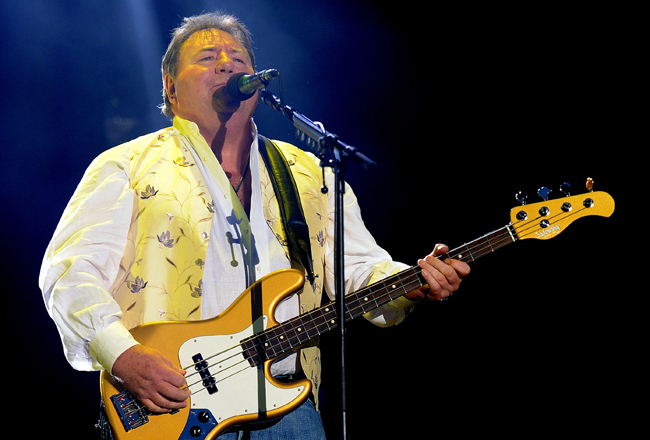
No event is more emblematic of the resurgence of interest in prog-rock than Britain’s High Voltage Festival. In July 2010, Emerson, Lake and Palmer (ELP), one of the best-selling acts in the genre’s history, reunited for the first time in 12 years at the large-scale London prog-focused concert. They performed a set of their epic, long-form suites including “Tarkus” and “Pictures at an Exhibition,” as well as delicate acoustic guitar-driven pieces such as “Lucky Man” and “From the Beginning.” The entire event was chronicled on the double-album Live at High Voltage Festival 2010.
Other notable ELP-related events occurred during 2010. The release of A Time and a Place, a comprehensive four-CD box set of vintage ELP live performances culled from across its career, proved highly popular with fans. A duo tour with vocalist, bassist and guitarist Greg Lake and keyboardist Keith Emerson playing ELP classics was also well received. Several full-length ELP live CDs follow in 2011, starting with Live at Nassau Coliseum '78.
During the years in between ELP activity, Lake has worked on several high-profile projects, including playing with The Who on its 2004 “Real Good Looking Boy” single and touring with Ringo Starr’s All-Starr band, captured on the 2003 Ringo & His New All-Starr Band CD and DVD releases. Lake reflected on both experiences, 2010’s ELP reunion, and his solo career in this expansive conversation.
Reflect on ELP’s performance at the High Voltage Festival.
It was a great event in that the audience was fantastic and really enthusiastic. The band was in pretty good shape, but we had tremendous technical problems on stage. It’s very difficult doing a one-off show in isolation like that. In many ways we were struggling from one song to another, but playing them as well as we could, despite what was happening around us. It was a really tough gig to play. Having said that, my lasting memory of the show was that it was good and people enjoyed it. We played well despite the problems. There was a tremendous feeling of bonding and friendship with the audience that has been with us across our history.
Fans in attendance said they were particularly moved by your commitment and delivery. Tell me about the attitude you went into it with.
For many years now, I’ve considered performing live almost a privilege. You never know when the last show will come, so I play every one as if it will be the last—because it may be. I hope it’s not, but one is always aware of the fact that there will come a time when it won’t be possible anymore. So, it’s with a sense of underlying gratitude that I perform now. The other thing I’ve learned in music is that commitment is what it’s all about. If you put a lot of commitment into it, chances are the result will be good. So I try to put in as much feeling as possible and prepare the music as well as I possibly can.
Describe the chemistry between the three of you after 12 years apart.
We’ve played so many shows together over the years that we’ve become more or less like a family. Our families are all integrated too in that everyone knows each other. In a way, as soon as the band started playing at High Voltage, it felt as if not a day had passed.
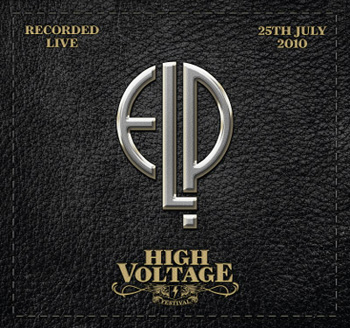
Carl Palmer made some negative comments to the media prior to the High Voltage show, including saying he expected everyone to be at each other’s throats immediately.
I don’t know why Carl has a propensity to dwell on negative issues. It’s not something I’ve ever fully understood. Keith and I really now treasure and value each other. That’s what it’s really about. Keith and I have had our differences over the years, but we’ve certainly put them behind us and just forgot about them. To be honest, we get on better than we ever have now. I’m waiting for Carl to reach the point of wisdom in his life when he realizes that carrying around grudges from the past is pointless. It’s always the person carrying the grudge that bears the burden and pays the price. There’s not much I can do about it for him. He’s got to reason through that stuff for himself.
What doors did the High Voltage event open for future ELP work?
We haven’t made any more plans, but the door is always open. If Carl reaches a point in his life where he feels more at peace with himself, then I could see it being possible. I would certainly do it and so would Keith.
High Voltage released an ELP track called “Touch and Go 2010.” What’s the story behind it?
What happened is “Touch and Go” got used in a film called MacGruber. The promoter of the festival thought it would be a good, topical thing to bring out, so we did a new remix of the version by ELP from the Return of the Manticore box set. This version has part of the original recording with a few new overdubs.
How did the Emerson-Lake tour come about?
The tour idea began when Keith and I were doing some songwriting in my studio in London earlier this year. Every now and then, we’d stop for a break and play one of the old ELP pieces. Sometimes I’d play a King Crimson thing. What we noticed is that when it was just the two of us playing, the songs had a different feeling. That’s because that’s how the songs were originally written. After all of these years, we’ve all heard the albums many times. But we never went back to that early writing approach when we first heard the material conceptually. We thought it was interesting and that it was something we could do on stage. It was a new perspective on the material. It developed from there into the idea of having it feel like two people working on material in a recording studio. That’s another area most people don’t get to see. So, the stage was set up to look like a studio where Keith and I are working on material together. Some of the material was a bit experimental. Some of it had sequenced backing tracks, and some of it was just the two of us. It was a different way of going out there and playing the music.
The last incarnation of ELP came to an unpleasant end in 1998 with dueling press releases—one from you and another from Emerson and Palmer. How did you and Emerson get past the negativity to work together again?
Bands go through ups and downs. That’s the nature of them. But when I look back at the ELP catalog, I’m mainly proud of it. There are one or two albums I wish we hadn’t made, but I think most artists would say that. We never broke up because of any fighting. It wasn’t like that. The only thing we ever argued about is music. In that sense, it was never personal. It was always an impassioned situation. People say it was about egos, but it wasn’t. It was about belief. If you believe in a musical idea so strongly that you’re willing to fight for it and the other person feels differently and wants to fight for his idea, things can become complex. It demeans the situation to say it’s about egos. And at my age, to be honest, I couldn’t give a fuck. I’m not saying we haven’t got egos, but that wasn’t the sparking point for disagreements in ELP. Keith would tell you the exact same thing. We would fight over things like whether or not we should put an orchestra on something and other musical ideas.
You performed an eclectic set list during the tour. How did you choose material for it?
We did King Crimson’s “I Talk to the Wind” because I’ve never performed it live before. I’ve done “In the Court of the Crimson King,” parts of “Epitaph,” and “21st Century Schizoid Man,” but never that one. The rest of the set was chosen because it was stuff Keith or I enjoyed playing. “Bitches Crystal” is very interesting to play as just a duo. It’s a very rhythmic piece and you’d think it wouldn’t work well without a drummer, but it worked really well. So we found some real surprises like that as we put together the set list. Some things we thought would work well didn’t, and vice-versa. It was an adventure to put the show together. It’s gratifying to see that the material still held up and received standing ovations, particularly given a lot of it is music we wrote in the early '70s. There was a sense of family with the audience during these performances. There’s a real bond. We grew up with our audience.
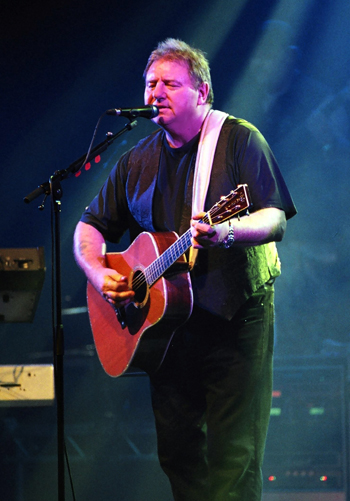
You’ve worked with some of the best rock drummers in the world. What was it like to tour without a drummer for the first time?
It was very strange. Sometimes we ran sequenced drums, but we tried not to do too much of it for obvious reasons. We didn’t want people thinking “They’re just performing without Carl Palmer playing drums.” We used sequenced drums occasionally because some of the pieces sounded better with a beat. Generally speaking, we got the biggest kick out of the stuff we played as a duo. There was a certain freedom about it because sometimes we could wander off the script a bit in terms of timing and go where the music took us. It’s one of the things King Crimson would do. One of the tenets in that band was it was more important to listen than to play, so I’m quite good at that. It’s an acquired skill in which you ensure you’re paying attention to the other musicians and not just blowing your own horn.
What inspired you and Emerson to begin writing together again?
The thought was that if we didn’t do it now, we probably never would. We’re getting on in years, obviously. We felt now would probably be the last time when we could engage in writing music with a view to playing it live and possibly releasing an album.
When you say you might record an album, is that as Emerson-Lake or ELP?
I don’t know. Keith and I have been writing material and it’s not specifically for any one record. It could be done any number of ways. We’ll have to wait and see. We have amassed quite a lot of new music and at some point we will start to record. When that time comes, we’ll determine the format. So either the Emerson-Lake or ELP format would be possible for it.
What can you tell me about the direction of the material?
I don’t talk about the direction of new material because it invariably changes along the way. I never predict completion dates on albums or anything like that, because it often doesn’t work out the way you think it will. All I can tell you is that it’s good music, I’m excited about it, and so is Keith. New material is always good. There’s nothing quite like a new work of art that’s been created. There’s an excitement about it, because it’s fresh. I think we haven’t done enough of that lately and it’s something we’ve turned our attention to.
ELP’s In The Hot Seat from 1994 was the last time we heard new songs from you. What have you been up to in a songwriting capacity since then?
I’ve done quite a lot of writing since, but I’m not one of those people who makes records or writes songs out of a sense of duty. If I never wrote another song, it wouldn’t really bother me. If I want to write them, I write them. It’s a matter of inspiration. I don’t sit around with some guilt thing thinking “I owe the world another song.”
Tell me about your current signal chain.
For both the High Voltage ELP show and the Emerson-Lake tour, I used a Gibson J-200 Montana acoustic-electric guitar with a Fishman Infinity Matrix undersaddle pickup. The bass boost switch is on and the tone and volume knobs are at 10. I also used a Taylor W65 jumbo 12-string with a Taylor pickup. For basses, I used a Fender '62 Jazz Bass and a Sadowsky jazz-style custom bass. The guitars were sent directly to the house, dry, through a Demeter Tube DI. My basses went through a Sadowsky Outboard Bass Preamp/DI and into a Mesa Boogie MPulse 600 bass head and two Mesa Boogie 1000W cabs.
What do you find appealing about the Fender and Sadowsky basses?
The original Fender '62 offers an excellent combination of design and versatility. The neck is also nimble and quick to get around on. In ELP, I have to cover a lot of different parts and some of them are very fast. If you play something like “Tarkus,” it’s shifting along at quite a speed. A big neck would be too slow and awkward to deal with. The Fender '62 neck lets me move around to match the pace of the music. It also has a beautiful, resonant low end. It has an ash body and a slab-board neck, all of which adds up to near perfection in a bass guitar. It’s hard to improve on it.
As for the Sadowsky, I went to Roger Sadowsky and said “I played one of your basses years back. I had one for a little bit. It was just so accurate. I’d love for you to make me one.” So, he did. The one I got has a Brazilian Rosewood neck and the electronics are fantastic. The bridge assembly is excellent and solidly rooted into the instrument. It’s the Sadowsky version of a Fender Jazz bass, and it’s really beautiful to play. It’s the Steinway of bass guitars in my view.
The Gibson and Taylor guitars have been mainstays in your rig. What makes them so ideal?
I’ve played Gibson J-200s all my life. If you’re strumming, they sound deep and rich, and if you cross-pick, they possess a really delicate sound. It’s a fantastic, all-around rock singer’s guitar that’s worked successfully for everyone from Elvis to me. The Taylor W65 has very comfortable action and a very light touch, especially for a 12-string. My preferred 12-string is my custom Zemaitis, but I don’t bring it on the road because I’m afraid of it getting damaged. It’s a very large, very thin guitar, with a narrow body cavity and big soundhole. It’s got a beautiful, harpsichord-like quality that I love.
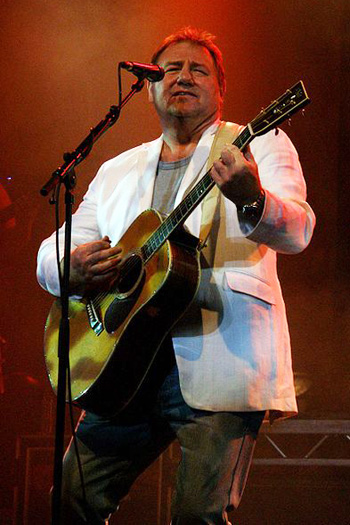
What are some of your other favorite electric guitars?
All the classics. I love Stratocasters for the reasons we all do. I also have a 1959 Gretsch 6120 that just screams rock and roll, and has a beautiful country and western twang to it. Another favorite is my Les Paul Telecaster because of the fantastic, crashing rhythm sound you get with it.
Describe your overall philosophy as a guitarist.
As a guitar player, it’s a bit of a lost cause in ELP really. It’s a token instrument that’s used for a change in sound. I began as a guitarist, but because I also started focusing on bass in the late '60s, I never developed my technique much after that point. So, I’m a 1969 guitar player, but quite a good one. My philosophy is to be as accurate as I can, as thoughtful as I can, and as good as my heart lets me be. I’m not into trickery or bluffing techniques. They’re fancy, but not very soulful. I think one well-placed note is worth a hundred arpeggio ramblings.
The guitar has never died for me or gone away. To this day, I can’t walk past a guitar shop without going in. I love guitar and bass in a different way. Playing guitar in ELP was always difficult because when I put down the bass, there was no bass player. So I had to deal with that. My main guitar contributions to ELP are more on the recordings.
You’ve said the key to your tone is purely in your fingers. Elaborate on that.
Largely, that’s true. It’s a funny thing. I was at the Speakeasy Club in London one night when I was very young. There was a jam going on and I was onstage playing guitar with Donovan. Jeff Beck came up to me and said “When this next song is finished, can I come up and play?” I said “Sure, Jeff. Yeah.” So we did the next song and he picked up my Telecaster and it sounded totally different, but he didn’t touch anything—not the controls on the guitar or the amp. He just picked it up and his sound was totally individual to him.
I also once asked Hank Marvin about his sound, because all the great guitarists typically acknowledge him as having one of the most unique sounds ever on the instrument. We all bought the Vox amp, the Stratocaster and Binson Echorec he used, but no matter how hard we tried, no-one could get that Hank Marvin sound just right. So I asked him “What’s the secret?” He said “Greg, there is no secret. The only thing I can think of is that when I started playing guitar, I held the plectrum the wrong way around. I held it as if I was writing with a pen.” After about a year, a friend of Hank’s came up to him and said “You know Hank, you’ve got it all wrong. That’s not how you hold a plectrum.” Hank replied “I’ve got so much in the habit of holding it like a pen that I never got into the right way of playing with a pick. So, I have this sort of half-and-half style. Half like a pen, and half the proper way. Maybe that has something to do with my tone.” All of this is to say that touch is critical to a great sound.
Were your contributions to ELP initially written on guitar?
That was often the case. What would happen is I would write complete songs with guitar and usually play it live for everybody, and the group would take it from there. When I wrote with Pete Sinfield, we’d make a quick recording of a song and present that to the group. Another way songwriting would work is Keith would write music and then we’d craft a song around part of the melody he had written. Sometimes Keith would only write a melody and that would form the basis for a song too. Those are the ways music typically came about for ELP.
How do you look back at your early '80s solo albums Greg Lake and Manoeuvres?
Working with Gary Moore on those albums was a real education. It was great to be the rhythm guitar player in that lineup. I really enjoyed it. Gary is a fabulous player, and the bass was covered properly, so it was a lovely experience. The problem with those two solo albums was they really lacked direction. I was lost in a way. Once you’ve been in a band like ELP, that’s who you are. If you try and go out and think about a solo career, yes, you can do it, but the public made you what they made you. They voted with their feet and said “You’re part of ELP. That’s who you are and that’s who you’ll be.” When you try and search for an alternative identity within that state, it’s difficult. For a long while, I was kind of lost and would try different things, which was appealing in a way. One minute I was playing a country and western song, the next minute I was playing heavy metal with Gary. It was fun, but also a bit obtuse and here, there and everywhere. I’m not sure about the whole concept of being a solo artist. I’m a guy in a band, really. Since I was a kid, I was in a band. I’m the frontman in a band and that’s where I feel the most comfortable.
You were going to release an orchestral solo album a few years ago. What’s its status?
I do have one recorded, but I’ve never found the right time to release it. I’m looking for a point in which I can play the stuff with an orchestra. I’ve done a lot of songwriting related to it but never really found the right moment to capitalize on and use that work. That was one of the motivations for coming together again with Keith. Now, some of those ideas will come into play.
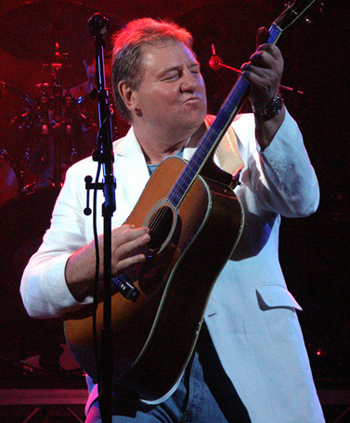
What can you tell me about the unreleased album?
It’s a combination of orchestral versions of some of the acoustic songs and instrumentals I’ve written. There are a couple of adaptations of things as well. I recorded it mainly on my own, playing and programming computer-based orchestrations. There are some session musicians, including drummers on it.
You were in Asia very briefly in 1983. What are your thoughts about your time with the group?
I was in the band once for my sins, yes. [laughs] I did it as a favor to Carl. He called me up one night and said “Greg, man, I wonder if you could do me a favor?” I thought he wanted to borrow a guitar or something. I said “Sure, what do you need?” He said “I wonder if you could play with Asia for a couple of weeks in Japan because we’ve just fallen out with John Wetton. We don’t have a singer and the shows are booked.” They had apparently booked this 747 jet to take contest winners of an MTV competition to the shows and none of it could be cancelled, so the thing had to go on. “Oh dear, oh dear. When are the shows?” I said. Carl said “It’s in three weeks time.” I responded “You can’t be serious, man. I couldn’t do it in three weeks.” He said “We have to do it.” And that’s how it happened. In the end, it got done. Asia were a funny bunch at that time. I think they’re more settled now. At that point, everyone was firing everyone. There were huge conspiracies. You’d walk down the corridor and there would be people plotting to fire each other in every room you walked into. [laughs] It was hilarious. But I did a brief stint with them and didn’t want to go in that corporate rock direction. I didn’t believe in that sort of music, so I didn’t continue.
You kept the ELP flame alive in the mid-'80s with Emerson, Lake and Powell. What are your thoughts about that group today?
It was certainly a good band with Cozy Powell. I don’t think he was the right drummer for Keith and I. He was a very powerful drummer, which in some ways was good from some musical standpoints. But in some ways, he lacked the jazz finesse at times that maybe would have been good for other aspects of the music. Everyone has their thing and Cozy’s was being a very powerful rock drummer. So we gained in that way and when the band was flying along, it was impressive.
Is it true there’s unreleased material from a partially-recorded second Emerson, Lake and Powell album?
There are tracks that we wrote that never came out. I don’t know if they’re lost or that we just never released them. Not everything you write is good enough to release or it looks that way at the time. Sometimes you go back and listen to discarded material and think “That was quite good. Why didn’t we release that?” That happens when you encounter an old demo. Sometimes we’d sit in the studio just tinkering around, looking for ideas. All of a sudden, Keith would write something that we didn’t take further. Then you listen back to it later and think “Why didn’t we pick up on that?” That was then and now is now. You listen to things with different ears as time goes on.
Reflect on touring with Ringo Starr’s All-Starr band in 2001.
It was fantastic because I grew up with The Beatles. They were an early influence, so it was an opportunity to play with one of my heroes. Playing with Ringo was a real eye-opener. Before I worked with Ringo, my impression of him was he was this loose player with a great backbeat. When I played with him, I realized how much of a disciplinarian he is and how hard he works. He’s really into the music—not just his music or The Beatles’ music, but all of the music he plays. He’s dedicated to getting it all right. I also realized how big of a part he played in The Beatles' music. He was a far bigger influence than people would believe, especially on the rhythm stuff. He wasn’t just this happy-go-lucky guy in the back shaking his head. He was a very clever thinker. As I played with him, I started to see why The Beatles were as good as they were. Of course, you had the songwriting of Paul McCartney and John Lennon, but when you stop listening to the main melody, harmonies or singing, and just focus on the rhythm, you’ll hear fantastic stuff. I believe if The Beatles had a different drummer that they wouldn’t have been as big as they were.
I should also say that Ringo is a wonderful human being. He’s been through an awful lot in his life. He’s seen a lot, done a lot, been there, and done that. And he’s been able to tell his story through his personal journey through the drums. He’s recovered from all of that stuff. He’s such a wise man. When he says “Peace and love,” that’s Ringo. He means what he says. You can sum Ringo up with those words.
Contrast having Starr drum on ELP's “Lucky Man” and “Karn Evil 9” during that tour versus Palmer's approach.
It was fantastic and lovely to have Ringo play those songs. It was even more lovely to play bass on his songs, because he has a great feel with his beautiful, off-the-beat approach. He’s not late, but he’s just on the back of the beat. Carl focuses on the forward part of the beat. He’s the first in. But Ringo is just slightly behind. Ringo's special feel always comes through and it’s so solid.
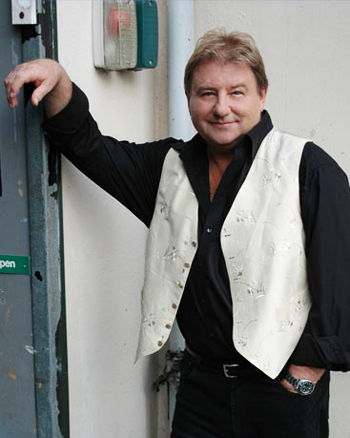
What was it like for you to work with The Who on “Real Good Looking Boy” in 2004?
I’ve worked with Roger Daltrey quite frequently because we do a yearly show for the Teenage Cancer Trust. We know each other very well from those. One day, I got a call from Roger. He was talking to Pete Townshend and said “We wondered if you wouldn’t mind coming in and playing on this song?” So, I went in and played with them. It’s remarkable because I knew all of The Who during my lifetime, including Keith Moon and John Entwistle. They were fantastic characters and musicians. People tend to forget how good John was as a bass player. He was fantastic. Keith was also tremendous as a drummer. He clowned around and did all sorts of mad stuff, but he could really play those drums. But when you work with Pete and Roger, you definitely know where the sound of The Who really comes from, because Pete writes all the stuff and Roger sings it. The combination of the two of them still has that unmistakable hallmark of The Who.
Pete is an extraordinarily talented musician and really knowledgeable. His musical scope is much broader than people might think. He understands orchestras and big bands. If you look at the range of things he’s written over his lifetime, you can see that he’s a very innovative artist. He’s also a very calm guy. He goes about his stuff in a quiet way. He’s a perfectionist and a dynamic presence.
How did you fit into that song?
Pretty well, because I play very accurately, and so does Pete. We both play very percussively too. That particular song didn’t have a lot of banging around, but it was a good and pleasant experience. We cut the song in just one day—it was really quick. It was fun. The drummer was Zak Starkey, which was nice, because I had toured with his dad Ringo.
Esoteric Recordings is reissuing the majority of the Manticore back catalog. Describe what it was like to co-helm the Manticore label.
It was a very good idea at the time. Manticore was created to sign interesting bands that couldn’t get a deal for one reason or another. Either they were too niche-oriented or they were oddities that major labels weren’t keen on. The problem with Manticore is that ELP’s time was in such demand during that period. We couldn’t devote ourselves to running a label properly. It was a very good, noble idea. In fact, we’re still friendly with some of the artists that were on the label. Some of them even still exist, like PFM. Their full name is Premiata Forneria Marconi, which translates into “First-Class Bread Shop.” There are still going strong which shows we were right in our choice of acts to support. Clearly, several have stood the test of time.
What's your involvement in the reissue program?
Only so far as we own the company and licenses, and that our permissions are required for the reissues. It doesn’t go any further. I like the fact that the music is available again. I’m a lover of history. I think there’s a lot to be learned from history—especially good history. The ELP and Manticore material is worth preserving and has value, and it will long after I’m dead and gone. I think people will poke around in record catalogs for a long time and say “Oh, look. Here’s Pete Sinfield’s Still album and it has some beautiful things on it with Greg Lake.” There are fascinating things within the Manticore catalog for ELP fans. There’s a story that permeates it that links the worlds of King Crimson, ELP, Pete Sinfield, and Keith Christmas. It’s like a huge family tree and people can understand the relevance of these projects and how they link together. From that point of view, these historical recordings are a pretty good thing.
ELP’s back catalog has been reissued in many different configurations in recent years. What’s your role in that process?
I don’t have a lot to do with the repackaging of the ELP things either. They tend to remaster them, they send them to you with the covers and ask “Is this okay?” The truth is, after you make a record, you don’t have too much to do with it, apart from the odd approval. It’s just the record company trying to sell new copies to new people. The one thing I feel hasn’t been done is a proper, in-depth documentary on the musical life of ELP—and that includes the box set one. I think they’ve focused on the more pretentious aspect of how much equipment we had, or how much we squabbled together. In reality, there was a lot of beauty and joy in ELP. We had a lot of great moments and fabulous musical chemistry. I don’t think the greatness of ELP’s music has been captured within a documentary. It was very special music and I’d like the story to be done justice.
Photo credits:
Photos 1-2 by Lee Millward/GRTR
Photos 3-4 by Lrheath